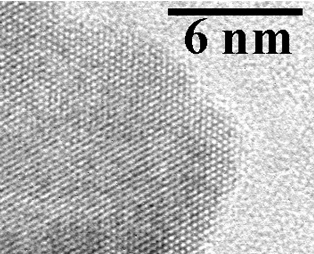04/02/2008
What makes a mineral?
Recent research from the group of Professor R. Lee Penn.
U of M Chemistry professor Lee Penn and six others have published a review article titled "Nanominerals, Mineral Nanoparticles, and Earth Systems." What makes a mineral? The general consensus is that a mineral is defined as naturally occurring, crystalline, and as having a defined and characteristic composition. So, what happens when minerals occur as nanoparticles? The chemical and physical properties of those materials can change dramatically relative to larger particles of the same phase, and those changes have important implications in Earth Systems.
Nanominerals, Mineral Nanoparticles,
and Earth Systems
Michael F. Hochella, Jr., Steven K. Lower, Patricia A. Maurice, R. Lee Penn,
Nita Sahai, Donald L. Sparks, and Benjamin S. Twining
Science 21 March 2008 319: 1631-1635
In this article, the authors review how many nanominerals and mineral nanoparticles have properties that are size dependent within the nanoscale size range. In fact, some natural, crystalline materials are known to exist only in the nanoscale size range (e.g., some clays and some iron oxyhydroxides), and these materials are defined in the article as nanominerals. Mineral nanoparticles, on the other hand, are defined as nanosized particles of minerals that have natural, bulk counterparts. These nano-sized materials occur in the atmosphere, in and on the solid Earth, in the oceans, in surface waters like rivers, in groundwater, and even within biological organisms (e.g., within proteins such as ferritin). We do not currently know the overall mass distribution of nanominerals and mineral nanoparticles on Earth or other planets, nor do we know what fraction of these materials have been identified in terms of occurrence, structure, and behavior. However, the authors show that mineral nanoparticles and nanominerals play important roles in a wide range of chemical, biological, and physical processes, including those within the Earth's oceans and even our own bodies.

Figure High-resolution transmission electron
micrograph of a hematite (Fe2O3 mineral nanoparticle from Namibia (sample courtesy of the Smithsonian
Institution research collection). |